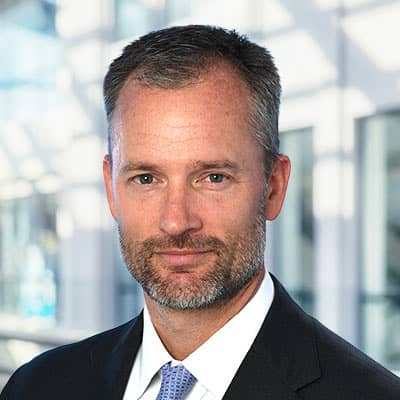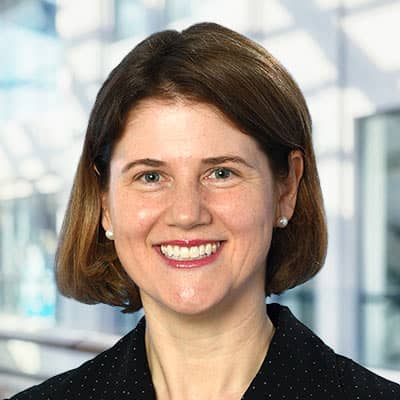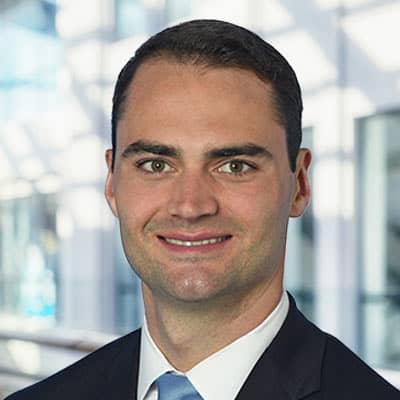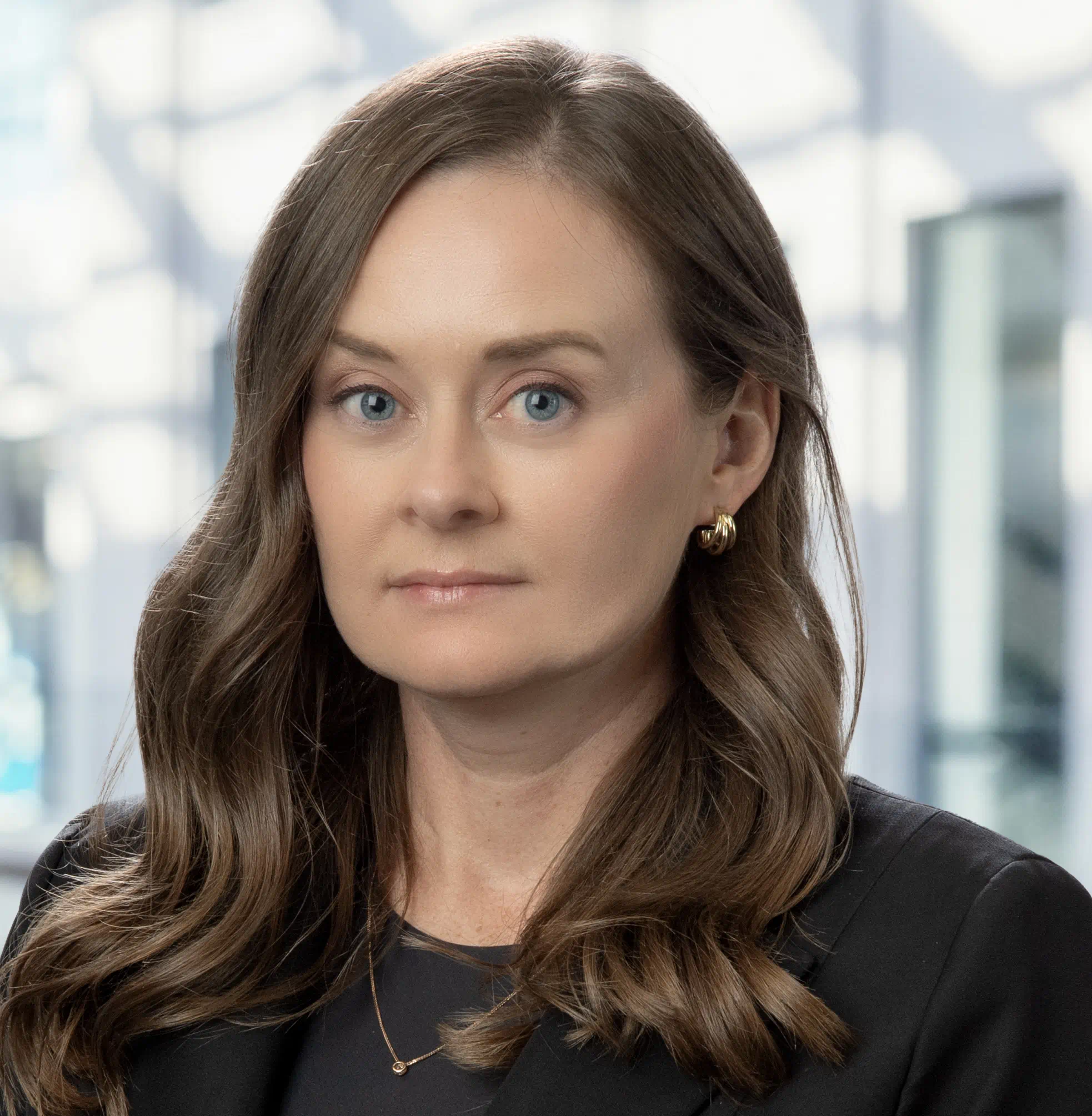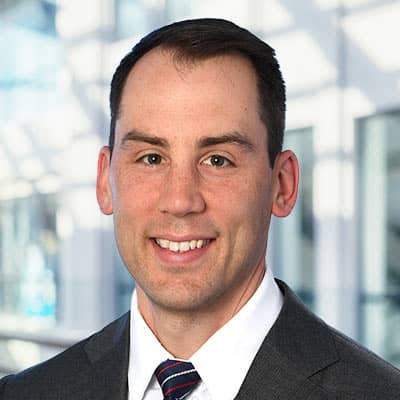► Managing Director, Portfolio Manager, Head of Credit for the High Yield Fixed Income strategy
► Assistant Vice President, Senior Credit Analyst for the High Yield Fixed Income strategy
► Managing Director, Senior Portfolio Manager for the Multi-Sector Fixed Income, Multi-Strategy, & Dividend Equity strategies
► Vice President, Senior Portfolio Manager for Securitized Fixed Income Products
► Vice President, Senior Portfolio Manager for Investment Grade Credit Fixed Income strategies
What Does Collaboration Look Like at Fort Washington?
Laura
"I think of collaboration as being willing to help when you can, and also being willing to get the help that you need when you need it. There’s a lot of expertise around the company that you may not be aware exists. In my opinion it’s far more beneficial to proactively find out if the expertise you are looking for exists. I do this by having conversations with my colleagues. I find that is more efficient than trying to recreate the wheel and develop an expertise yourself."
Garrick
When collaborating, you want to capture the value of investment decisions across the entire spectrum.
"I think Laura said it correctly. The reason to collaborate is so that you gain the particular strengths of your colleagues. I find if you do not take advantage of all the resources around you, you are probably not making the best decisions. Therefore, collaboration is very important to facilitate making better decisions. I find it brings as much information to the table as possible.
Sometimes a culture of collaboration can develop out of institutionalized collaboration, which occurs in more structured and forced settings. Eventually that can evolve into a culture of collaboration, which is openly knowing and sharing different skill sets that can add value to you and your team. It becomes more natural to consult with certain subject matter experts regardless of what team or product they may support. We are fortunate to have a culture of collaboration that has permeated the entire firm for a very long time.
The opposite of a collaborative approach, by the way, is a siloed approach where you never interact with other teams. Markets themselves are not siloed. In fact, markets are a spectrum of investments. When collaborating, you want to capture the value of the investment decisions across the entire spectrum."
Amy
"I had an experience of collaboration with an industrial company, a mining equipment manufacturer that was downgraded from Investment Grade (IG) to High Yield (HY). The mining industry was undergoing a huge decline. The company’s leverage ratio was increasing due to a large drop in EBITDA from lower commodity prices driving much lower demand for their equipment. It still looked like a decent company to me. What actually helped me move closer to an investment decision in terms of buying the bonds were discussions with an equity analyst at our firm who had followed the company for several years. I stopped by his office, and over the course of several half-hour conversations, he helped me understand that the company was viewed as one of the best in its industry, and its management strategy."
Paul
"The industrial mining company Amy mentioned is an excellent example of the value of collaboration because the company eventually merged with an investment-grade company. The high yield bonds Amy’s team purchased did very well. Subsequently, I was looking at the bonds from an investment-grade perspective. They still seemed very attractive, but if I didn’t have a resource like Amy who already knew the company well, I might not have made additional investments in the bonds. This decision was additive to the Investment Grade team’s performance because of my collaboration with Amy."
Austin
"On the Multi-Sector team, we are tasked with allocating capital to several different fixed income sectors. Therefore, the collaboration between the portfolio managers and sector analysts is critical to getting insight into those individual sectors. Otherwise, the three Multi-Sector portfolio managers would have to be specialists on every single sector—knowing all the fundamentals of each issuer as well as industry valuations, etc. We rely on our sector experts to provide that from a bottom-up standpoint. All our Multi-Sector products involve collaboration among almost 40 professionals. This means that everybody is working together to generate value for our investments for our clients."
Is Collaboration at Fort Washington Essential to Excellent Performance to Establish Better Client Outcomes?
Amy
"It certainly is to me, but having said that, I know that people also learn and think differently. Some colleagues come to very good decisions independently. That may be a function of the sector and a function of their expertise or merely how a person learns or works. People process information differently, but I think the benefit of our firm is that our culture allows us to use our own strengths, individually and collaboratively, in reaching our investment decisions."
Austin
"For our Multi-Sector products, collaboration is 100% key to our performance and our client experience. At our firm, it is the analysts who are recommending names from within their sectors to the portfolio managers. We have a viewpoint from the top-down, but we rely on the bottom-up fundamental research of the analysts to formulate an opinion."
Is There Such a Thing as Too Many Perspectives, and Can You Ever Have Too Much Collaboration?
Garrick
A group of 10 people can come to a great decision; a group of 100 people cannot.
"As a portfolio manager, when you are working to decide what to add or not add into the portfolio, you can reach a point where data collection turns into noise. A group of 10 people can come to a great decision; a group of 100 people cannot. Collaborating has to be balanced, and you need to seek enough opinions to get a diversity of thought without getting bogged down in too many opinions. Frankly, over-collaboration and too much detail can lead to not being able to convert data at hand into information that can benefit our investment decisions."
Austin
"I would definitely agree with Garrick’s assessment. When collaborating, it’s key to understand who the ultimate decision maker is. We can have multiple professionals contemplating a decision, but there has to be a final decision maker to mediate a decision. At our firm, it helps to know this during the decision-making process. As a result, everyone respects that decision in the end."
Garrick
"Austin is correct. My job as a portfolio manager is to recognize the strengths of everyone on my team. I need to make sure they have the appropriate tools to make their recommendations and a work environment where they can openly express their opinions. My job is to filter these recommendations and help to manage the investment discussions in order to ensure we reach the best outcome."
Amy
"This kind of managerial approach creates a real sense of self-empowerment on our teams and a genuine spirit of collaboration among our investment professionals."
Why Did You Join the Firm, and What Keeps You at Fort Washington?
Garrick
"I joined Fort Washington in 2013. My family and I were planning to move from the East Coast. I had known the High Yield team at Fort Washington for a very long time. We were aligned in so many areas—on philosophy and process, how we generally think about credit and High Yield investments. I have been fortunate during my time with the firm to have been given increasing levels of responsibilities. After the original architect of the High Yield team was promoted, I was promoted to lead the team. The work I do remains interesting, and it’s what I love to do."
Amy
Through my time with the firm, I have grown to understand the sectors I cover intimately. The colleagues I work with are one of the key reasons I enjoy my work and want to stay with the firm."I joined the High Yield team in 2012. Unlike Garrick, while I had done previous jobs that used a lot of the same skills, I had not worked in a buy-side or investment division where I was choosing investments. Fort Washington took a chance on me to a certain degree. Through my time with the firm, I have grown to understand the sectors I cover intimately. The colleagues I work with are one of the key reasons I enjoy my work and want to stay with the firm."
Laura
"I've been with the firm since 2007 and with Western & Southern since 2005. When I started with our parent company immediately after college, I knew it was a good idea to join a company that would offer me options to explore different career paths. The opportunity at Fort Washington coincided with my desire to move into the fixed income area. That opportunity gave me the freedom to completely change gears. At Fort Washington, ideas aren't shut down simply because they've never been tried before. Instead, we explore new ideas."
Paul
Our firm has a strong culture of risk management, but we also have a mandate to be creative and try new things.
"Like Laura, I joined the firm right after college in 2005. Fort Washington gave me an immediate opportunity to join the investment team, and still today, I recognize this was a unique opportunity. It sent a signal to me from the very beginning of my career that this was a company willing to take a chance on a person in whom they believed. I have stayed with the firm because I feel like Fort Washington and its parent company Western & Southern are investment-first organizations. Compared to other insurance companies, the investment side of the business for our parent company is key to its success. That’s what makes Fort Washington a very exciting place to work. Our firm has a strong culture of risk management, but we also have a mandate to be creative and try new things."
Austin
"I joined Fort Washington in 2013. The dynamic opportunities are what excites me about Fort Washington. I have found that if you’re willing to work hard, you will be given increasing amounts of responsibility. Unlike some larger firms, we do not have to climb a chain of people in front of us. Because we’re smaller, there’s always a lot of work to be done and opportunities to grow."
Learn More About Fort Washington's Fixed Income Team
Garrick, Amy, Austin, Laura, and Paul are five investment professionals who contribute their many years of investment expertise and leadership to our Fixed Income Team. Get to know the other collaborative members of our Fixed Income Team and the investment strategies and solutions they provide.













